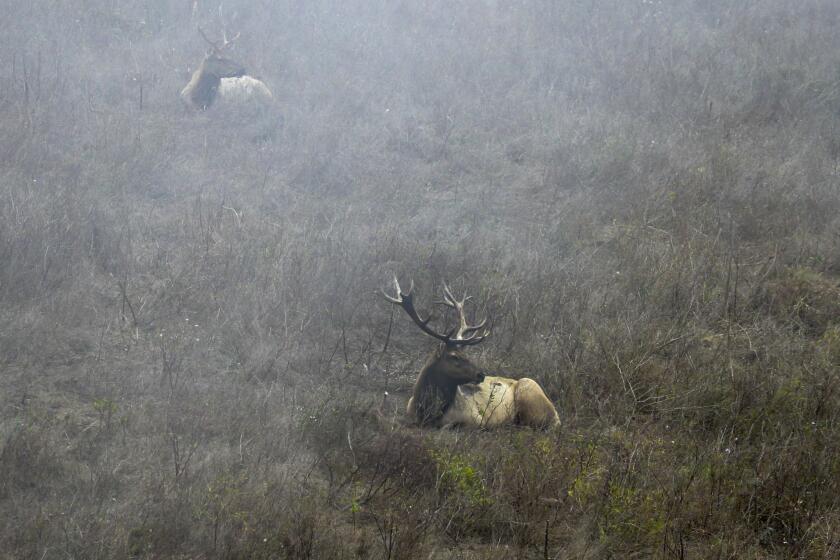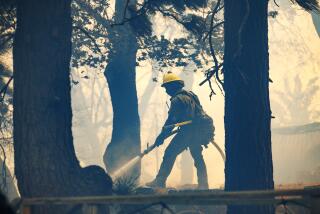In Point Reyes, all ears are tuned to local radio, a beacon amid the fog of fire
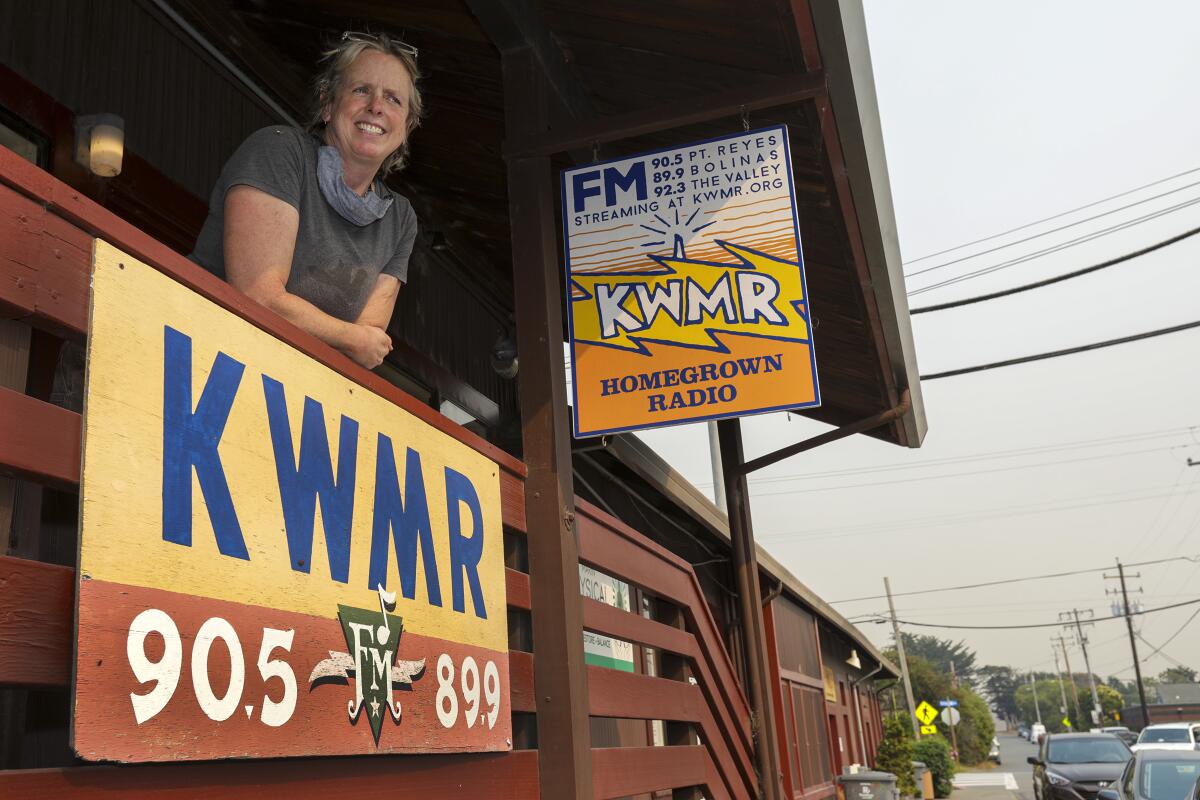
POINT REYES STATION, Calif. — With evacuation warnings still in place, smoke from back-burn fires drifted out of the oaks and pines above the tiny town of Point Reyes Station in Marin County on Friday, mixing with thick coastal fog until the two were indistinguishable to most people.
But Amanda Eichstaedt, general manager of KWMR, the local public radio station, easily saw the difference. Like most topics related to this quixotic town of about 400 that abuts the West Coast’s only National Seashore, she was happy to share her knowledge — with everyone in about a 20-mile radius.
“We know that people totally rely on the radio,” she said of this Arcadian territory, where cellphone reception is spotty on a good day.
Since fire broke out here after an afternoon lightning strike on Aug. 18, Eichstaedt has turned the one-studio station into a vital source of information for the remote outpost and the rural towns that surround it. In a place where local news is otherwise a once-weekly paper or a conversation at the post office or local market, the radio station has long been a trusted source of knowledge when emergencies hit.
Across California, stations like KWMR fill a vital vacuum during crises, especially fast-moving wildfires. With their local knowledge — from where exactly back roads are located to quick access to the fire chief — these broadcasters are increasingly finding themselves to be crucial authorities in the toughest moments, when power is out, danger is high and a radio wavelength floating through the air is a lifeline.
Since it was founded in the late 1990s, KWMR has “been a really important part of our community life,” said Dewey Livingston, a local historian who has been interviewed on the station many times. “But it is especially noteworthy during times like this. ... They are the ones you can go to for information.”
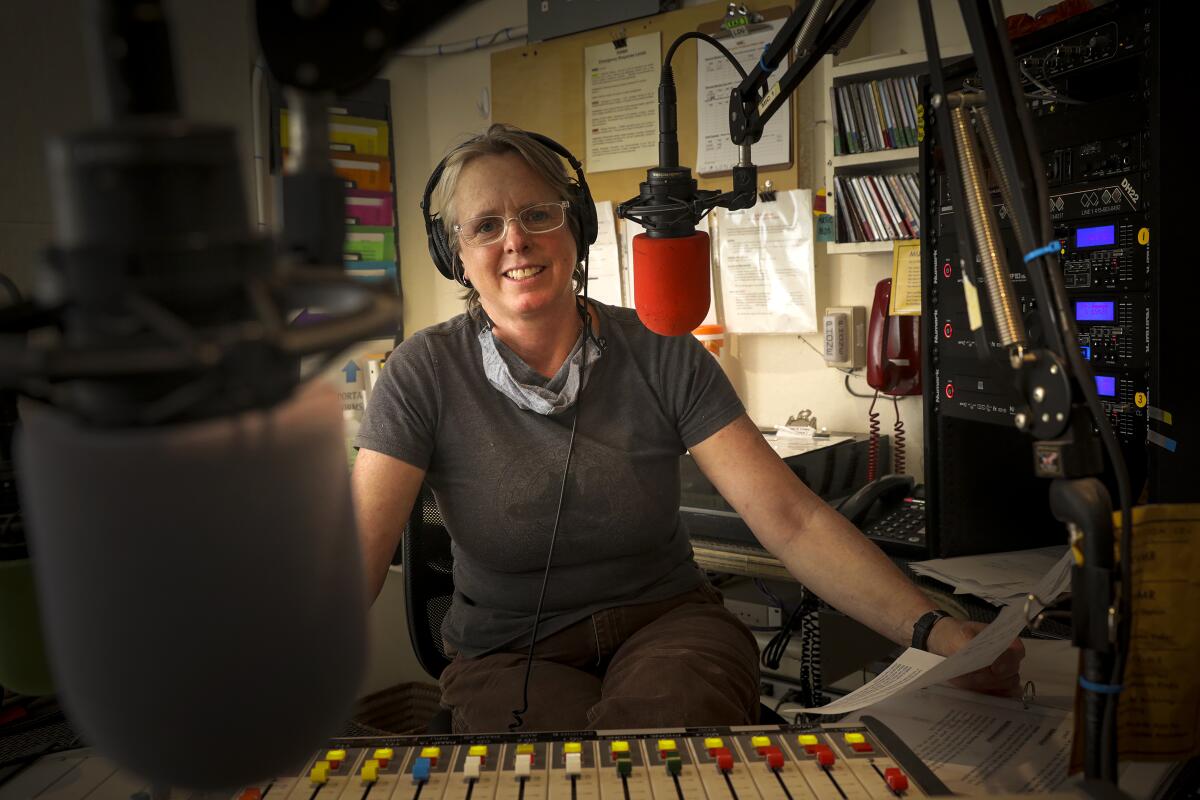
But the COVID-19 pandemic upended how the shoestring station operates, and this wildfire season has left Eichstaedt and her program manager, Jeff Manson, running it nearly alone, “flying on adrenaline,” he said — the last two standing in a complex endeavor that usually has six staffers and 90 volunteers to help. Because there is only one cramped broadcasting studio, with its shared microphone and poor ventilation, no one but Manson and Eichstaedt are allowed inside.
“By mid-March, everything about the way we ran the radio station had turned on its head,” said Manson, a musician and self-taught audio engineer who began his job in January. It’s his first experience as a reporter.
“Fire compounded with pandemic with now being in a public information role, it’s exciting,” he said. “It feels really good to be here listening to the scanner, getting the information straight, because we are in a time of so much speculation.”
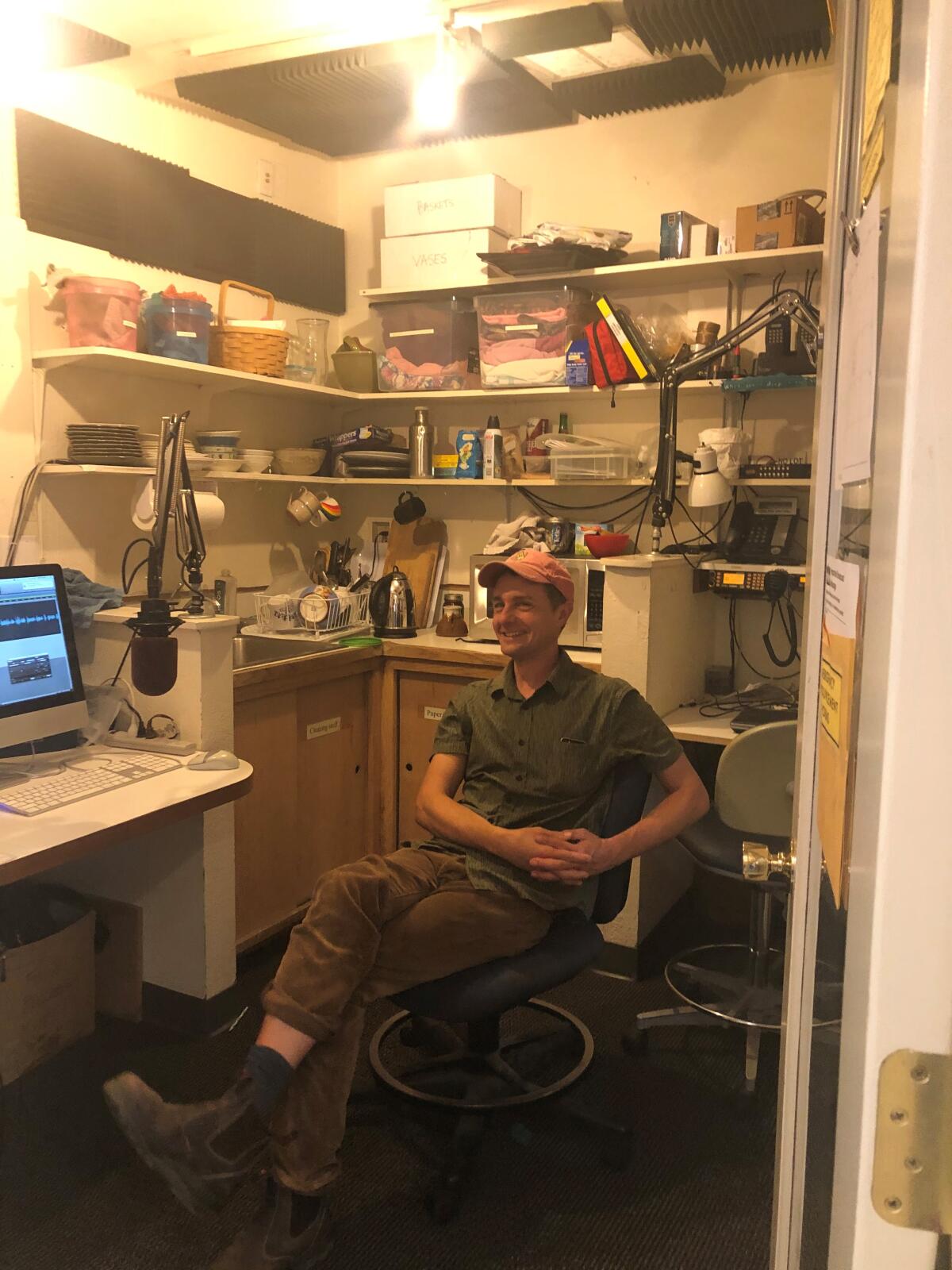
KWMR has been running updates every half-hour on the nearby Woodward fire, which burned nearly 5,000 acres before being contained, even as Eichstaedt and her skeleton crew evacuated their own homes. Manson’s wife, he said, has a “strong flight instinct,” and had their two children ready to go the first night smoke appeared at their coastal home.
Though the Woodward fire was small compared with others burning in California, its effects here were felt by nearly all of the 14,000 residents who make up what locals call the “west county,” of Marin. Its an area that encompasses seven unincorporated towns and some of the most pristine protected land in the state, dotted with expensive homes, artisanal farmers, aging hippies, Latino service workers, off-the-gridders, Tesla-driving visitors from the Bay Area and herds of wild tule elk.
The station’s role in local emergencies started with its inception 21 years ago, a few years after the last major wildfire in the area, but grew when January floods in 2005 cut off the roads connecting the network of small towns that dot the forested hills and rolling pastures.
KWMR was running an informal system of people with emergency radios in the area, linked by nine repeaters, a combination of a receiver and transmitter that bounced the signal through the mountains. It was the most reliable communication in the area, so much so that the local fire chief asked to be part of it.
But in the village of Olema, the radio operator had been trapped elsewhere, leaving its residents stranded without information.
Eichstaedt had just moved into Olema, a picturesque village of little more than a few streets, to run a bed and breakfast with her future husband. When the water subsided, she made her way to KWMR and asked for a radio of her own — and fell in love with the place at first sight. She remembers walking in the cramped second-story office, with its racks of CDs and walls of memorabilia, and thinking, “What the hell? This is so cool.”
Eichstaedt was interested in radio in college, but it wasn’t until she was settled in Point Reyes that she had time for it. She launched a volunteer show about localism and, later, a late-night music show. Eventually, she was hired and created a popular country music show, “Bakersfield and Beyond,” and took over day-to-day operations.
Although the station has handled its share of crises, mostly more fires and floods, Eichstaedt said the community had embraced its mission even more since the pandemic started. Each week, the local representative from the Board of Supervisors comes on to talk about how government is handling the coronavirus, as does a county health officer. And she’s become “like BFFs” with the county public information officer, she said, which has allowed the station access to information quickly.
“That’s been huge ... our relationship with the first responders in the area,” added Manson.
Is it appropriate to intervene to help wildlife amid a disaster? That question has arisen in fire-scorched Point Reyes.
Manson said that, as the months drag on, he’s becoming more accustomed to the constant tsunami of information.
“There is a weird parallel between COVID and a wildfire in a way in that they are these dynamic situations but they are slow moving also,” Manson said. “Stuff isn’t changing hour to hour, and yet people are really hungry for information.”
He has been spending a lot of time inside their “emergency operations” center, a space about the size of a guest bathroom that also doubles as the facility’s kitchen. Crammed alongside boxes containing tablecloths and a dish rack of bowls and coffee mugs is a bank of scanners that the duo monitor nearly constantly. When a siren wails on the main street, both stop to check cellphone apps and the broadcast channels to see if it’s just a routine call, or one people will need to know about.
He and Eichstaedt have learned if they don’t put out facts, small-town gossip will take over.
“People sort of fill that gap on social media by making stuff up,” Manson said. “ Just between you and me, some of these text threads I am on, these people are nuts.”
Eichstaedt said that even some journalists had gotten it wrong, hampered by their lack of local knowledge.
Shortly after evacuation orders first went into effect for the recent fire, Eichstaedt said a television station broadcasting from the Bay Area made a mistake between a mandatory evacuation order and an evacuation warning. As rumors began to run rampant on social media, Eichstaedt was able to text the information officer for the correct details and start pushing them out.
Record heat. Raging fires. What are the solutions?
Get Boiling Point, our newsletter about climate change, the environment and building a more sustainable California.
You may occasionally receive promotional content from the Los Angeles Times.
Despite the challenges, Eichstaedt and Manson have also kept up a full slate of programming, helping their volunteers MacGyver in-home studios from on-hand equipment. Those shows run the gamut — locals reading books on air for an hour solid, talks about dreamcatchers, as well as a morning show between two female relatives with what Manson describes as anarchist views.
Manson also started a program called “Quarantine Dreams” that solicits work — poems, thoughts, requests — from listeners. With bars and other gathering spots largely shut down, he’s seen that show fill a need.
“I was surprised how much a program like that can actually foster a sense of community,” Manson said. “Especially with the pandemic, I think it’s really given us the opportunity to see the purpose radio can serve.”
Though the fire is nearly 100% contained, the duo are still on high alert. Tuesday, winds picked up, raising tensions across Northern California and reminding those living in wildfire areas that the dry season was far from over. For Manson and Eichstaedt, that means this pandemonium will likely remain their foreseeable future.
“I’m either going to cry or keep going,” Eichstaedt said. “It’s strange times.”
More to Read
Sign up for Essential California
The most important California stories and recommendations in your inbox every morning.
You may occasionally receive promotional content from the Los Angeles Times.
